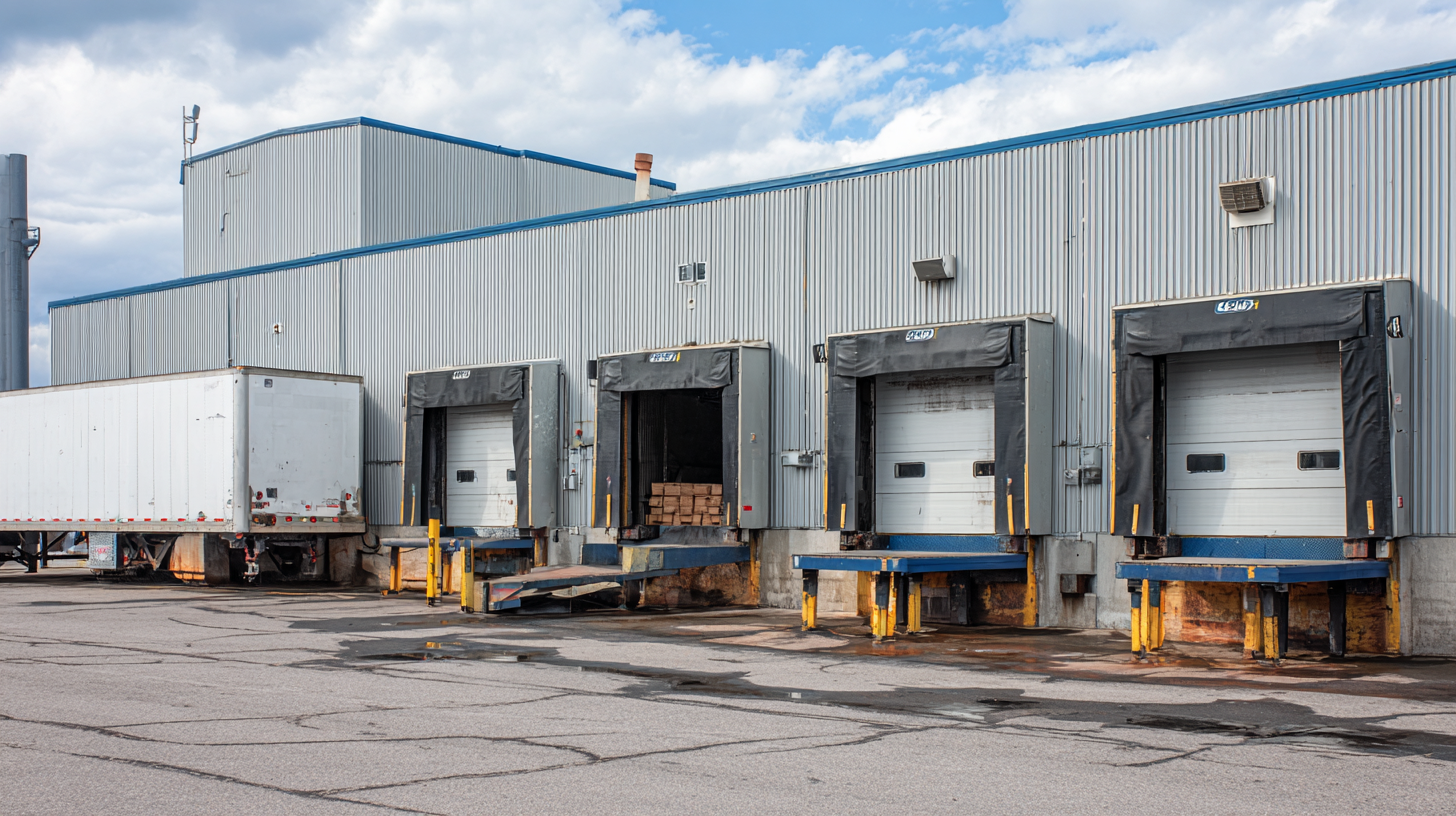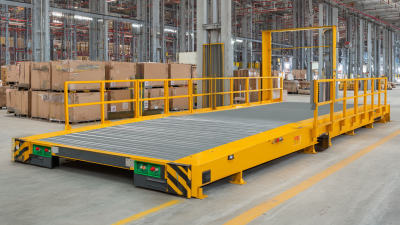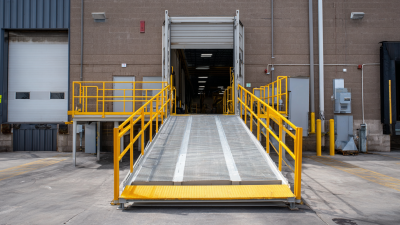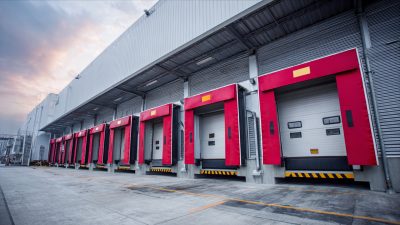The process of dock leveler installation is a critical component of efficient warehouse operations, facilitating smooth transitions between trucks and loading docks. According to a report by the Material Handling Industry of America, over 80% of freight is moved by trucks, highlighting the importance of optimizing loading dock efficiency. Proper installation and maintenance of dock levelers can significantly reduce loading times and enhance safety, as a staggering 70% of workplace accidents occur during the loading/unloading process, as indicated by the Bureau of Labor Statistics. Additionally, studies show that well-installed dock levelers contribute to the longevity of loading dock systems, reducing repair costs by up to 30% over five years. By leveraging the right tips, tools, and techniques for dock leveler installation, facilities can ensure improved operational efficiency and enhanced safety standards in their logistics operations.

 When it comes to dock leveler installation, having the right tools and equipment is crucial for achieving a successful setup. Essential tools include a power drill, wrenches, a level, and safety gear, such as gloves and goggles. The power drill is vital for securing brackets and anchors, while a variety of wrenches ensures you can handle different bolt sizes. A level is indispensable in ensuring that the dock leveler is properly aligned, preventing future operational issues.
When it comes to dock leveler installation, having the right tools and equipment is crucial for achieving a successful setup. Essential tools include a power drill, wrenches, a level, and safety gear, such as gloves and goggles. The power drill is vital for securing brackets and anchors, while a variety of wrenches ensures you can handle different bolt sizes. A level is indispensable in ensuring that the dock leveler is properly aligned, preventing future operational issues.
One of the key tips for a smooth installation process is to ensure that all tools are organized and accessible beforehand. This minimizes downtime and the frustration of searching for misplaced items during the project. Additionally, taking accurate measurements of the dock opening before selecting your leveler can save a lot of hassle later on. Always follow the manufacturer’s instructions closely, as they often contain specific recommendations regarding the equipment required for installation and safety practices to follow.
Finally, consider investing in quality equipment. While it might be tempting to go for the cheaper options, high-quality tools and materials can significantly enhance the durability and functionality of your dock leveler, leading to long-term satisfaction with your installation.
Preparing your site for dock leveler installation is a critical step to ensure efficiency and safety in your operations. According to a report by the Material Handling Industry (MHI), nearly 70% of workplace accidents occur during manual loading and unloading processes, which underscores the importance of optimal dock design. Before commencing installation, it's essential to assess the surrounding area for any potential obstructions, ensuring a clear and level space that allows for smooth transition between the truck and the dock.
Moreover, evaluating the capacity requirements of your dock leveler is crucial. The Industrial Truck Association (ITA) indicates that improper capacity selection can lead to excessive wear and tear, resulting in costly downtimes. Therefore, measure not just the height but also the weight and volume of goods typically handled at your facility. Taking the time to perform these preliminary steps will not only streamline the installation process but ultimately enhance operational safety and efficiency in your logistics workflow.

When installing a dock leveler, achieving precise alignment and leveling is crucial for optimal functionality and safety. Start by ensuring the dock leveler is correctly positioned, maintaining a level height with the loading dock. Utilizing a laser level can enhance accuracy, allowing you to adjust the leveler to match the dock height perfectly. Another effective technique involves measuring the gap between the dock and the truck bed to guarantee a seamless transition for loading and unloading.
In addition to alignment, the leveling process must account for any variances in the truck height. Implementing a spring assist mechanism can help counterbalance the weight of the dock leveler. This not only simplifies the leveling adjustments but also enhances safety by mitigating risks during operation. Regularly inspecting and maintaining the dock leveler will help ensure it continues to function effectively over time, reducing wear and tear. Remember, thorough preparation and attention to detail during the installation phase can lead to a significantly enhanced loading dock experience.
| Technique | Description | Tools Needed | Tips |
|---|---|---|---|
| Initial Measurements | Measure the height of the loading dock and the trailer to ensure proper alignment. | Tape measure, Spirit level | Always double-check measurements before installation. |
| Proper Alignment | Align the dock leveler with the back of the trailer to prevent gaps. | Alignment tools, Level | Use a laser level for precision alignment. |
| Secure Installation | Ensure all bolts and fasteners are tightened to specification. | Torque wrench, Ratchet set | Refer to the installation manual for torque specifications. |
| Final Leveling | Level the dock leveler after installation to ensure a smooth transition. | Hydraulic jack, Level | Adjust in small increments for accuracy. |
| Routine Maintenance | Conduct regular checks for wear and tear on the leveler components. | Inspection tools, Lubricant | Schedule maintenance bi-annually. |
Installing dock levelers can present a variety of challenges that require careful navigation to ensure successful outcomes. One common issue faced during installation is inadequate space for maneuvering equipment. This can be particularly problematic in constrained areas where conventional methods do not suffice.
To overcome this, employing specialized tools and utilizing modular designs can help facilitate smoother installation processes, allowing for adaptability in tight quarters.
Another significant challenge is maintaining a comfortable and safe working environment during the installation. High-Volume Low-Speed (HVLS) fans can play a critical role here by ensuring proper air circulation, thus mitigating heat stress and improving overall employee comfort. Additionally, using dock seals can further optimize the environment by keeping conditioned air inside the dock area, which not only enhances employee welfare but also contributes to the efficiency of the installation process. Taking these factors into account can lead to successful dock leveler installation and long-term operational benefits.
To ensure the long-lasting performance of your dock leveler, regular maintenance is essential. One of the most important steps is to keep moving parts free of debris and contaminants. This includes cleaning the hydraulic components and checking for any wear or damage. An annual inspection should be performed to identify issues before they become severe, allowing for timely repairs that can extend the life of the dock leveler.
Another critical aspect of maintenance is lubrication. Moving parts such as hinges, rollers, and arms should be lubricated according to the manufacturer’s specifications. This not only facilitates smooth operation but also reduces friction that can lead to premature wear. Additionally, monitoring the hydraulic fluid levels and inspecting for leaks or contamination will help maintain optimal performance. Following these simple yet effective maintenance tips will help you achieve a reliable and durable dock leveler that meets the demands of your loading dock operations.
This bar chart illustrates the maintenance frequency of dock levelers over a five-year period. Regular maintenance helps ensure the long-lasting performance of your dock leveler.



